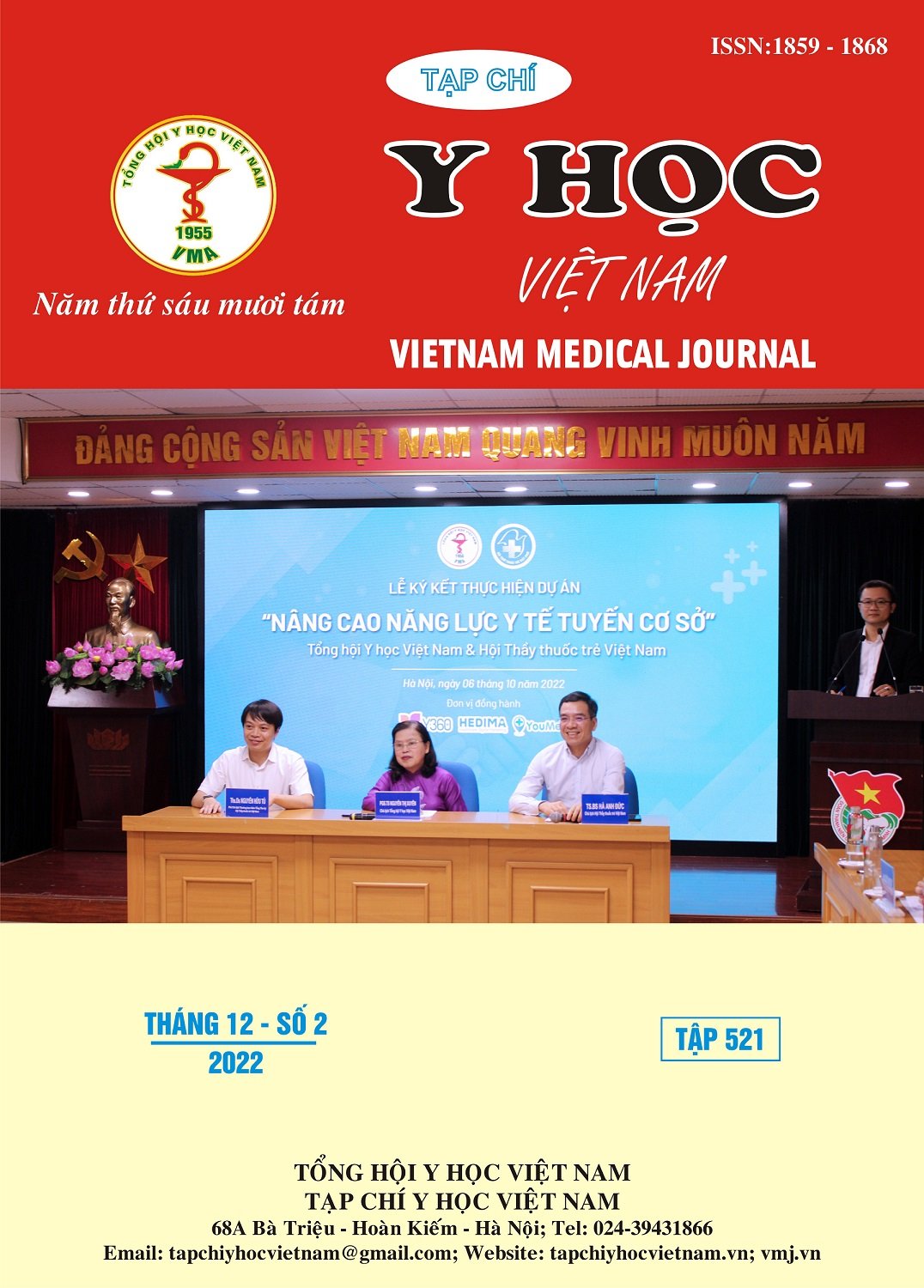NGHIÊN CỨU CHỈ SỐ AIP Ở BỆNH NHÂN BỆNH TIM THIẾU MÁU CỤC BỘ MẠN TÍNH
Nội dung chính của bài viết
Tóm tắt
Mục tiêu: Khảo sát chỉ số AIP (Atherogenic Plasma Index) và mối liên quan với một số đặc điểm lâm sàng, cận lâm sàng ở bệnh nhân bệnh tim thiếu máu cục bộ mạn tính. Đối tượng và phương pháp: 50 bệnh nhân được chẩn đoán bệnh tim thiếu máu cục bộ mạn tính và 30 người được chụp động mạch vành bình thường, tham gia nghiên cứu từ 12/ 2021 đến 9/ 2022. Tính chỉ số tác nhân xơ vữa trong huyết tương (AIP) theo công thức dựa trên kết quả xét nghiệm. Kết quả: Tuổi trung bình của nhóm BTTMCBMT là 67,30 ±10,48, nhóm không BTTMCBMT là 64,7 ±10,08. Giá trị trung vị của AIP ở nhóm bệnh tim thiếu máu cục bộ mạn tính lần lượt là 0,34 (0,11 - 0,51) cao hơn so với nhóm chứng 0,18 (-0,43 - 0,37) với p > 0,05. Giá trị trung vị của AIP của nam 0,33 (0,11 - 0,51) thấp hơn so với nữ 0,35 (0,1 - 0,6) không có ý nghĩa thống kê (p < 0,05). Trong nhóm BTTMCB mạn tính, giữa nhóm có và không có đái tháo đường, chỉ số AIP khác biệt có ý nghĩa (p < 0,05) nhưng không có sự khác biệt với hút thuốc lá, tăng huyết áp và RLLP máu. Chưa thấy sự khác biệt có ý nghĩa chỉ số AIP giữa các mức độ đau ngực theo phân độ CCS, giữa 2 nhóm suy tim và không suy tim. Kết luận: Chỉ số AIP không có sự khác biệt giữa hai nhóm. AIP có mối liên quan với tình trạng có đái tháo đường hoặc không đái tháo đường. Tuy nhiên, không có sự liên quan tới tuổi, giới và các yếu tố nguy cơ tim mạch khác gồm hút thuốc lá, tăng huyết áp và RLLP máu. Mối liên hệ giữa AIP và tình trạng đau ngực hay suy tim cũng chưa được ghi nhận.
Chi tiết bài viết
Từ khóa
Rối loạn lipid máu, chỉ số tác nhân xơ vữa trong huyết tương (AIP), bệnh tim thiếu máu cục bộ mạn tính
Tài liệu tham khảo
2. Nguyễn Thanh Xuân, Nghiên cứu mối liên quan giữa mức độ tổn thương động mạch vành với một số yếu tố nguy cơ tim mạch. Tạp chí y -dược học quân sự, 2014. Số 1-2014.
3. Phạm Vũ Thu Hà, “Nghiên cứu sự biến đổi chỉ số tương hợp thất trái – động mạch ở người mắc bệnh tim thiếu máu cục bộ mạn tính trước và sau can thiệp động mạch vành qua da” Luận án tiến sĩ y học, 2021.
4. Calabrò, P., et al., Epidemiology and Management of Patients With Acute Coronary Syndromes in Contemporary Real-World Practice: Evolving Trends From the EYESHOT Study to the START-ANTIPLATELET Registry. Angiology, 2018. 69(9): p. 795-802.
5. Hamzeh, B., et al., Visceral adiposity index and atherogenic index of plasma as useful predictors of risk of cardiovascular diseases: evidence from a cohort study in Iran. Lipids Health Dis, 2021. 20(1): p. 82.
6. Mahalle, N., et al., Study of pattern of dyslipidemia and its correlation with cardiovascular risk factors in patients with proven coronary artery disease. Indian J Endocrinol Metab, 2014. 18(1): p. 48-55.
7. Mahalle, N., et al., Association of metabolic syndrome with severity of coronary artery disease. Indian J Endocrinol Metab, 2014. 18(5): p. 708-14.
8. Zheng, Y., et al., Atherogenic index of plasma for non-diabetic, coronary artery disease patients after percutaneous coronary intervention: a prospective study of the long-term outcomes in China. Cardiovasc Diabetol, 2022. 21(1): p. 29.


